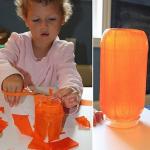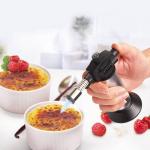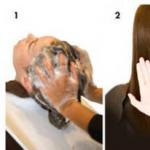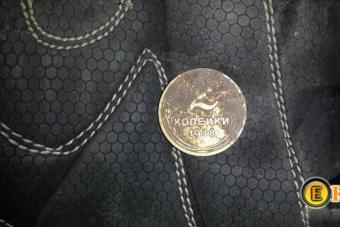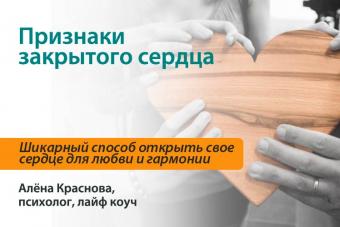You can get sick at any time of the day, including when it is not possible to visit the pharmacy. Therefore, you need to keep at least the most necessary medications at home. Below we provide a sample list of the contents of a home first aid kit. Choose the appropriate ones, supplement it with drugs that are suitable specifically for your family members.
Antipyretic medications in a home medicine cabinet
PARACETAMOL, CEFEKON D suppositories (for children from 3 months to 3 years), NUROFEN (pain reliever, anti-inflammatory, antipyretic), EFFERALGAN, COLDACT, TERRAFLU and analogues, RINZASIP, COLDREX, etc. Most drugs are based on paracetamol.
Painkillers in a home medicine cabinet
CITRAMON P, BENALGIN, ANALGIN, ASPIRIN, IBUPROFEN, NUROFEN - for headaches. NO-SPA, SPAZMALGON - for muscle spasms. VALIDOL, CORVALOL, NITROGLYCERIN - for heart pain.
Sedatives in a home medicine cabinet
Tincture of MOONOR, VALERIAN, peppermint herb, lemon balm and oregano, calendula, hawthorn and rose hips, NOVO-PASSIT, PERSEN, GLYCINE, soothing drops GERBION, soothing collection, etc.
Antihistamines in a home medicine cabinet
TAVEGIL, SUPRASTIN, CLARITIN, FENISTIL, ZIRTEK, etc.
For sore throat
Rotocan, Hexoral, Imudon lozenges, pectusin lozenges, Doctor Mom lozenges, Iodinol, Lugol's solution, Furacilin for rinsing, etc.
Against cough
Gedelix, Gerbion, Lazolvan, Ambrobene, Bromhexine, Doctor MOM ointment (used for rubbing and local massage during sputum discharge), Linkas, cough tablets, Stoptussin, Mucaltin, Pectusin, ACC, licorice root syrup, etc. Read more about cough treatment
Nasal drops
NAPHTHYZIN, NAZIVIN, SANORIN, OTRIVIN BABY, etc.
Poisoning, gastrointestinal pain
ENTEROSGEL, ACTIVATED CHARCOAL, SMEKTA, MEZIM, FESTAL, sachets of REGIDRON - against dehydration, HILAC Forte, OAK BARK or St. John's wort - strengthening. Senna leaf, buckthorn bark, Duphalac - laxatives.
For burns, cuts
Ointments PANTHENOL, BEPANTHEN, DEXPANTHENOL - are used in children from birth, LEVOMEKOL - in children over 1 year. For burns, you can use Panthenol spray for non-contact application to the affected surface. ACTOVEGIN and SOLCOSERYL in the form of ointment or gel are approved for use from the first days of life, have wound-healing properties, but do not have a disinfectant effect, and it is also better not to combine them with other similar drugs. EPLAN cream has wound-healing, bactericidal, regenerating properties, and is effective against frostbite and insect bites.
Disinfectants in a home medicine cabinet
HYDROGEN PEROXIDE 3%, IODINE, brilliant green solution, potassium permanganate powder, medical alcohol.
Antiseptic for skin and mucous membranes
MIRAMISTIN, OCTENISEPT - wide range of applications: treatment of wounds, for gynecological, ENT diseases, used as an antibacterial agent for inhalation (nebulizer, Octenisept diluted with water 1:4).
Additional items in your home medicine cabinet
Sterile bandages, cotton wool, bactericidal and regular plaster, tourniquet, elastic bandage, pipettes, rubber bulb, medical thermometer, tanometer, tweezers, heating pad, several syringes, baby cream, wet disinfectant wipes, paper handkerchiefs, cotton swabs and pads, powder powder , baking soda, mustard plasters, scissors.
Carefully! There are contraindications. Before use, be sure to consult your doctor!
The first aid kit should be stored in a dry place, protected from light, out of reach of children. Carry out an “inventory” of medicines approximately every six months to purchase expired ones or dispose of expired ones. It is convenient to store a sheet of phone numbers in a first aid kit. emergency services, pharmacies and paid clinics.
Photo - photobank Lori
Every home has first aid kit. But rarely the contents of this box, bag, cabinet carefully thought out. More often these are remnants of medications from previous treatments and drugs that a person takes for some kind of disease. Of course this is wrong.
A first aid kit can save a life. These are not empty words. So that it does not happen that at the right critical moment the first aid kit does not contain the most necessary, for its contents must be monitored, choose the right one, look at the expiration date.
What to put
No one is calling for throwing money away. You don't need anything extra. Let's try to determine what should be included in a home first aid kit. It is recommended to have on hand just in case the following drugs:
- Antipyretics and painkillers. Antispasmodics.
- Sedatives.
- Anti-inflammatory.
- Against colds.
- Against cough.
- Antiallergic.
- For digestion.
- Against diarrhea and constipation.
The list is approximate. Each family has its own characteristics, in addition, the use of certain medications is seasonal nature. Let's say in the summer there are fewer colds and more poisonings. The list of drugs in your home medicine cabinet must be approached creatively.
Ready kit
 Practically healthy people can buy personal use kit containing minimum for first aid. It includes dressings, means for treating wounds, burns and drugs that can bring a person to his senses if he suddenly becomes ill.
Practically healthy people can buy personal use kit containing minimum for first aid. It includes dressings, means for treating wounds, burns and drugs that can bring a person to his senses if he suddenly becomes ill.
There are also standard kits for a home first aid kit. You can buy one as a basis for your own, which will then have to be supplemented based on the needs of the family. It is clear that children and older people may need very different medications. That's why It’s better to pack your own first aid kit. Especially if family members have some kind of disease, and this is almost always the case.
It should be remembered that all medications have their own shelf life and storage method.
We complete the first aid kit
The work must begin with an audit of the medications available at home. See what's available, expiration date, what it's from. Ruthlessly throw away everything that raises any doubt. Next we compose list of necessary medications in a home medicine cabinet. We buy. After this, they need to be correctly arranged into categories, so it will be easier to find what you need.
Antipyretic and painkillers
Most of them relieve pain and fever at the same time. This paracetamol, aspirin, analgin, ibuprofen. There should be enough of them in your first aid kit to last for a couple of days if necessary. A person decides independently which of these drugs to put in the first aid kit; he knows what suits him best. 
To relieve some types of pain, antispasmodics are needed - no-spa, drotaverine. They are taken for spasm of cerebral vessels and for abdominal pain.
Often used against colds and flu Fervex, Theraflu. They help quickly and relieve symptoms. Should have drops for eyes, nose, ears. Cough tablets.
Sedatives and cardiac drugs
Liquid sedatives require refrigeration. This barboval, corvalol, corvaldin. They relieve heart pain. Must have in your first aid kit validol. It will help with neurosis, angina pectoris, motion sickness. One blister or bottle will be enough.
For the gastrointestinal tract
Food poisoning of one gravity or another is common in our lifestyle, when we do not always eat at home. A must in the first aid kit Activated carbon or smecta. Coal is taken 1 tablet per 10 kg of weight, the supply for the family can be calculated. To restore the microflora there must be probiotics. For diarrhea - imodium, lopedium.
Many people love to eat and do not always control this process. In this case, enzyme preparations are needed in the first aid kit - mezim, fistal, pancreatin. Moreover, we note that Mezim and Pancreatin differ only in price and packaging. The same can be said about other drugs; many have cheap analogues.
Laxatives – buckthorn bark, hay leaf.
Against diarrhea – oak bark, blueberry fruits.
Allegrics
Allergy sufferers should have antihistamines in their first aid kit - claretin, suprastin, diazolin and others. Please note that some of them have a pronounced drowsy effect; you should not take them while driving; if you have important work to do, sleep.
For external use
External products help cope with skin diseases and her others problems. What you need to have:

- Iodine and brilliant green. These are bactericidal agents for wounds.
- Antiseptics if the wounds are purulent. Salicylic alcohol. Tincture of calendula.
- Hydrogen peroxide stops bleeding. It should be stored in the refrigerator.
- Pantinol - against burns.
- Heparin ointment or troxevasin. Helps against swelling and hematomas.
- Anti-inflammatory drugs that are used for bruises and sprains. Ketoprofen, diclofenac.
- Redavit (belanten) – ointment for skin healing.
Other materials

- Necessarily - sterile and non-sterile bandages different widths and other dressing materials. You can buy a lot, they have no expiration date.
- For bruises and sprains - an elastic bandage.
- A variety of adhesive plasters - in rolls, disposable bactericidal.
- Thermometer. Mercury requires especially careful handling. Bath thermometer.
- Scissors.
- Tweezers.
- Warmer.
- Gauze bandages.
- Various syringes.
- Syringes of different sizes.
- Disposable gloves.
- Ice pack.
- Measuring apparatus blood pressure.
- Hemostatic tourniquet.
We have considered what should be in a home medicine cabinet. Medical reference lying next to her can help a lot. If you don’t have it, you can keep all the attachments for the purchased drugs. Comfortable to hold them in one folder. You shouldn't rely on your memory, it can fail.
It should be remembered that All medications have their own expiration date and storage method.. A dry, dark and cool place is the only general condition for storing all drugs. There should be a first aid kit in a place inaccessible to children. We wish you to get sick less often and recover quickly.
A home first aid kit includes a minimum set of medications that should always be at hand. There is no need to keep a battery of bottles with syrups from different types cough, stock the refrigerator shelf with products to support the immune system and eubiotics with “good bacteria”, buy antibiotics without a doctor’s prescription. After all, 24-hour pharmacies are available to almost everyone, and people with chronic diseases themselves know what supplies they need to keep at home.
A universal first aid kit contains what is needed urgently and suddenly, helps to wait for the doctor and can be used by people without medical education.
Disclaimer. Before purchasing and using medications, consult your doctor.
The article indicates the main active ingredients of the drugs. Trade names may differ; hundreds of different drugs are produced with the same active ingredient. Choose your remedy based on your doctor’s recommendations and your wallet, and for convenience, use the service to search for a medicine by active substance.
1. Dressing material
Cotton wool. Bandage. Gauze napkins. Patch. Elastic bandage. Gloves. There are constant challenges with these essential items. Everyone knows that they should be at home. But when they are urgently needed, they cannot be found. And if cotton wool can still be found in a cosmetic bag, then everything is bad with a bandage and napkins. When you get hurt, you have no time to remember where everything is. You need to take dressing material and stop the bleeding, so make sure your first aid kit is stocked with the necessary supplies.
2. Shoe covers
Do you think shoe covers are not needed at home? Still needed. “They called the doctor, but he didn’t take off his shoes,” “The paramedic trampled in the hallway” - you’ve either heard such complaints, or you’ve uttered them yourself at least once. Give the doctor and ambulance staff shoe covers, this is a cheap solution to a painful problem.
3. Medical devices
Even the healthiest people should have a thermometer and tonometer. Temperature and fluctuations in blood pressure happen to everyone, and treatment depends on the readings of the simplest devices.
4. Painkillers and antipyretics
Paracetamol, ibuprofen, nimesulide are non-steroidal anti-inflammatory drugs. You need to put all three medications in your first aid kit. They differ in their duration of action and anti-inflammatory activity. Practice shows that if the temperature does not drop from paracetamol, then ibuprofen helps; If ibuprofen fails, nimesulide will help. As remedies for headaches and toothaches, drugs help in different ways, depending on individual tolerance. It is important not to get carried away and not to take all medications with an interval of half an hour, but to follow the instructions in the instructions and dosage.
5. Antispasmodics
A sharp attack of aching pain may be a symptom of smooth muscle spasm. Most often the head (with vascular tension) and stomach (with organ spasm) suffer abdominal cavity). One of the safest drugs that helps in this case is drotaverine. It has few side effects, the main one of which is uncontrolled use by patients who suppress pain instead of treating the cause of its occurrence.
6. Antiseptics
Stop smearing yourself with green paint, this is a thing of the past. You can treat the wound so that nothing stings and leaves no traces of dye, using good antiseptics. For example, chlorhexidine. Antiseptics have many more uses. In summer, you can treat your feet and armpits to prevent unpleasant odor sweat. Treat mucous membranes (even with a sore throat). Treat surfaces and various objects if you need to disinfect them. Unlike your favorite hydrogen peroxide, special antiseptics do not dry the skin. They don’t stop the bleeding either, but wounds that can be treated without medical intervention will heal anyway (with the help of a tight bandage), and if stitches are needed, peroxide will not help.
7. Wound healing drugs
Panthenol should be in the form of a burn spray at home. Contrary to popular advice, burns should absolutely not be lubricated with oil, lard or anything that grandmothers like to use. A burn is one of the most dangerous injuries, which is very difficult to heal. And even special ointment is painful to apply. Let's say thank you to modern release forms that can cope with minor burns and help you wait for a doctor if the injury requires doctor's supervision.
Panthenol or solcoseryl in the form of ointments and gels will cope with minor household injuries, cuts, and abrasions. It’s even better if panthenol is combined with an antiseptic, the same chlorhexidine.
8. A set of cold medicines
Most often we get sick this way: stuffy nose, sore throat, cough, fever. Fever is treated with NSAIDs (they were written about above); for other manifestations of ARVI, symptomatic treatment is used. A set of basic supplies is needed so that you don’t have to run to the pharmacy when you most want to lie under the covers and just sleep. So, how to save yourself during acute respiratory infections epidemics.
Interferon. Many drugs ending in “-feron” help the body quickly connect antibodies to the fight against the virus. Store candles and sprays in the refrigerator, otherwise there is no point in using them.
Vasoconstrictor nasal drops with oxymetazoline. Have you heard about drug addiction and an eternal runny nose, from which only constant instillation can save you? These are the consequences of using old generation drugs. Modern options allow you to last 5–7 days, instilling the drug only twice a day. Result: the virus receded, addiction did not appear.
Sore throat remedies with antiseptics. Tablets and lozenges are taken to numb the pain a little and make swallowing easier. Some contain antibiotics that should not be used without medical supervision. Keep medications with antiseptics and enzymes, such as lysozyme, at home. Read the instructions and do not eat for two hours after taking it so that the medications have time to take effect.
9. Antihistamines
Antihistamines are used not only to combat allergic reactions. They also help relieve swelling during colds (and use vasoconstrictor nasal drops to a minimum) and get rid of itching after insect bites (if you apply ointment with the drug to the bite site). Now there are a lot of drugs that do not cause drowsiness, made on the basis of suprastin, dimethindene, cetirizine, in convenient forms and different dosages for children and adults.
10. Sorbents
Activated carbon is a remedy that is, without a doubt, time-tested. Helps when you've eaten something wrong or caught an intestinal infection. And stories are told about the benefits of coal during excessive alcohol consumption. And they still don’t know how to use it. Drinking two black tablets is not enough, they drink charcoal in packs! The pleasure is doubtful. In the meantime, intestinal sorbents based on smectite and lignin have appeared, which are used one tablet at a time.
11. Remedies for constipation
The best remedy for such a problem is diet. But the diet will work someday later, but constipation happens here and now. The problem can be solved simply. Lactulose syrup acts from the inside (which is prescribed for infants, but which works best on adults), and suppositories with glycerin act on the outside. No addiction, no side effects.
12. Oral rehydration products
This faithful friends sorbents and antipyretics. In case of poisoning, diarrhea, vomiting or very high temperature the body needs to restore the water-salt balance. Problems begin when you don’t feel like drinking in this state. Making an effort and drinking one glass of a solution that will restore strength is easier than trying to pour liters of compote into yourself.
13. Medicines for hypertensive patients
The most dangerous medicine in the home medicine cabinet is captopril, which is now recommended to be used instead of the popular nitroglycerin. If you do not have problems with blood pressure and blood vessels, you should still have captopril: this is a drug that can be given to a patient in case of a hypertensive crisis (one of the most common causes of death in the world) before the ambulance arrives.
Before buying medicine, study the symptoms of a hypertensive crisis.
Algorithm of action: noticed the symptoms, called an ambulance, put the patient to bed, provided him with a flow of air. If he is taking any medications to lower blood pressure, give them. And only if there are no such drugs, put a captopril tablet under your tongue. Important: tell the emergency personnel what you used. We remember that this is not brilliant green or charcoal, it is strictly forbidden to distribute captopril just like that for “eye floaters”.
What is always in your first aid kit “just in case”?
34Health 09/05/2016

Dear readers, the topic of our conversation today will be very important. We will talk about such a necessary thing as a home first aid kit, as well as what should be in a home first aid kit.
Every person probably has a first aid kit in their home. For some it is a special cabinet or box, for others it is just a plastic bag with medicines. There are also those people who store everything anywhere, I hope you are not one of them.
The composition of the first aid kit usually also leaves much to be desired: a lot of medicines are stored there that are left over from past diseases, and it’s a pity to throw away the leftovers, there are many drugs with an expired expiration date, there are tablets without packaging, etc.
But if you think seriously, a properly stocked home first aid kit is a lifeline, a safety net for you and your family, which in special cases can save the life of you or your loved ones.
Even if you are a proponent of natural medicine, you still need a certain set of emergency medicines in the house, and this set should be in a certain place so that in case of an emergency everything you need can be easily found. And before we move on to the list of medications in the home medicine cabinet, I would like to draw your attention to two points.
List of medications in a home medicine cabinet
What should be in a home medicine cabinet, what medications should be present without fail? Let's talk about this in more detail.

Painkillers
Probably the most common ailments that happen to us are various pains. It should be remembered that we are all different and have different sensitivity to pain, therefore, for example, with menstrual pain, the same drug helps one person, but not another. Also, there is probably no drug that would help with all types of pain. Therefore, it is necessary to have several types of painkillers in your home medicine cabinet.
The most common and familiar painkillers for many are analgin and aspirin , which also have anti-inflammatory and antipyretic properties. But these drugs are old-generation drugs and have a lot of negative side effects, so it’s better to use paracetamol or him analogue of efferalgan , which contains a loading dose of paracetamol.
In addition to these drugs:
- Spasmalgon are used for various pain caused by cramps, including headaches and menstrual pain.
- Citramon and other caffeine medications help with headaches and low blood pressure.
- Smecta and espumisan
used for abdominal pain.
But we should remember that we can use painkillers for abdominal pain only when we know exactly the cause of the pain. What if it’s appendicitis or other similar disorders? Then you cannot do without surgical intervention and you cannot take painkillers. - No-shpa is an old drug with complex action and is used for spasms in the intestines, liver, and kidneys.
- Ketanov, buskopan helps with menstrual pain.
- Tempalgin, baralgin - for toothache.
- The drugs have a comprehensive analgesic effect Wobenzym and No-Spa Forte .
Experts advise having painkillers with different active ingredients in your home medicine cabinet, since sometimes it becomes necessary to use them together or alternately to achieve a better effect.
In addition to the medications listed, it is good to have in your home medicine cabinet pain-relieving ointments and anti-inflammatory drops :
- Apizartron, viprosal (with bee and snake venom), as well as finalgon, fastum gel, final-gel, etc. in the form of ointments and gels alleviate pain in the back and joints, and are used for bruises and sprains.
- Otinum, otofa is used for inflammation of the middle ear and ear pain.

Cold and flu remedies
Another group of diseases that occur quite often in families are various colds, flu, sore throat, bronchitis, etc. Here it is also necessary to have a number of drugs of various types in your home medicine cabinet.
- Paracetamol (Panadol, Efferalgan, Coldrex), analgin with aspirin (Upsarin Upsa, Askofen p) are antipyretics.
- Ibuprofen and nimesulide have anti-inflammatory, antipyretic and analgesic effects.
- Pinosol is the least harmful remedy for a runny nose. Also, the already known naphthyzine, sanorin, etc. are widely used for these purposes. By the way, the last two drugs are also used for allergic rhinitis.
- Stoptussin, bromhexine, zedex, ambrobene help with various types of cough. You can also buy a breast mixture for these purposes, which includes herbs.
- Mucaltin and ambroxol are used for better sputum discharge; in severe cases, ACC can be used.
- Lollipops Faringosept, Strepsils relieve sore throat.
- Theraflu and antigrippin are drugs that relieve symptoms of colds and flu. Of course, it’s great when you get such relief and the painful cold symptoms go away. But we should not forget that only the symptoms have passed, and only temporarily, and not the disease itself. Therefore, if your condition improves, you should never run to work.
In addition to all of the above, you should put in your first aid kit:
- several gauze masks to avoid infection when caring for the sick,
- inhaler for inhalation,
- influenza or oxolinic ointment to avoid contracting the flu during an epidemic.

Cardiac and sedatives
Your home medicine cabinet must contain sedatives. Usually this:
- corvalol/valocordin – can also be used as a sleeping pill,
- tincture of motherwort or valerian,
- novo-passit is a modern drug that relieves anxiety.
By the way, Valocordin or its analogue Corvalol is not a cardiac drug, as many people think, its effect is rather sedative, although the heart and nerves, as is known, are often interconnected.
In case of heart pain, you should put in your first aid kit:
- validol,
- valerian tincture,
- tincture of lily of the valley,
- nitroglycerine.
Nitroglycerin, cardio aspirin, etc. are also used to relieve an attack of angina.
Although many criticize validol that it is already outdated and does not help at all, from my own experience I can say that it relieves spasms of blood vessels in the head well, and also helps to better tolerate extreme heat and high humidity.
Many even quite healthy people can have high blood pressure. The most harmless and mild remedy is raunatin. Stronger drugs for stopping hypertensive crises are captopril and nifedipine. But if you are worried about blood pressure, your doctor should choose the pills for you!

Remedies for the stomach and intestines
To prevent indigestion or heartburn from being taken by surprise, it is also necessary to stock your first aid kit with some medications for the most common ailments of the stomach and intestines.
- Festal, enzistal or mezim forte - after a heavy meal to improve digestion.
- Smecta, enterodes, ultra adsorb or activated carbon are adsorbent preparations used for various poisonings, as well as for indigestion.
- Cerucal or rehydron eliminate nausea and vomiting and help with severe diarrhea.
- Phosphalugel, Maalox, Reni, Gastal, etc. - for heartburn. About the funds traditional medicine, with which you can relieve attacks of heartburn, you can read in my article Treatment of heartburn at home. Folk remedies from heartburn.
- Acelact, espumizan help with disorders, as well as with bloating, rumbling in the stomach and gas.
- Ersefuril or Intetrix - for bacterial infection.
- Senade, bisacodyl, regulax - for constipation.
- Linex, Linex bio or Hilak forte help improve the condition of the intestinal microflora.
Antiallergic drugs
You should also have anti-allergy remedies in your home medicine cabinet, even in cases where there are no allergy sufferers in the family, because the situations can be very different. These are medications such as:
- suprastin,
- tavegil,
- Diazolin.
Remedies for wounds and burns
A home first aid kit requires a set of products to use for various injuries, wounds, burns, etc., which always happen unexpectedly.
- Iodine (5% alcohol solution) or 1-2% alcohol solution of brilliant green is used to treat the edges of wounds and minor scratches. Can be replaced with an iodine pencil.
- Chlorhexidine and miramistin can serve as a more modern replacement for iodine and brilliant green; they do not stain the skin or cause a burning sensation.
- Hydrogen peroxide 3% is used to stop bleeding, in the form of a solution for various rinses and washes.
- Boric acid, baking soda (0.5-2% aqueous solution), potassium permanganate (potassium permanganate) are also used in the form of a solution for various rinses and washes. In addition, potassium permanganate is used for gastric lavage in case of poisoning.
- Panthenol (D-Panthenol, dexpanthenol) is used to heal various wounds and burns. You can supplement it with acerbine in the form of a spray or sulfargin.
- Set of callus plasters.
- Eye drops of the “artificial tear” type are used in case of dryness, as well as when a foreign body gets into the eye.
- Sulfacyl sodium (30% solution) is used for infections, eye injuries, and when a foreign body gets into the eye.
- Saline solution is a universal remedy that can be used for various washes, including eye washes.
In addition, complete the kit with the following required components:
- cotton wool (sterile and non-sterile),
- bandages of various widths (sterile and non-sterile),
- individual dressing packages,
- sterile gauze wipes,
- bactericidal and simple adhesive plaster,
- cotton swabs for treating wounds with antiseptics,
- greasing spatulas,
- hemostatic tourniquet,
- hemostatic sponge to stop bleeding,
- elastic bandages,
- rubber fingertips.

Additional funds
The home first aid kit can be supplemented with the following medications:
- Traxevasin gel, hirudoven, detralex relieve fatigue and swelling of the legs. The drug hirudoven contains an extract of leech saliva. You can read about the benefits of leeches in my article Hirudotherapy. Treatment with leeches.
- Teymurov's paste is used for sweating feet.
- Clenzit C ointment is used to eliminate acne and pimples.
In addition, your home first aid kit should include the following components:
- mustard plasters - used not only for colds, but also for angina pectoris;
- compress paper or polyethylene - used for compresses;
- latex gloves,
- medical alcohol (96%),
- ammonia - used for fainting,
- It is recommended that everyone over 40 years old have a tonometer (a device for measuring blood pressure),
- thermometer, including one for the bathroom (if necessary),
- various disposable syringes,
- pipettes (including eye pipettes),
- medical banks,
- syringes of various sizes,
- measuring cups for taking medications of various sizes,
- petrolatum,
- heating pad with rubber tubes and tips,
- oilcloth bedding,
- ice bubble,
- medical tweezers,
- blunt scissors.

First aid kit for medicines. What else should you pay attention to?
If one of the family members suffers from any chronic disease, then the composition of the home first aid kit must be supplemented with appropriate medications.
When planning a trip or creating a first aid kit for a vacation or summer cottage, pay close attention to the availability of a pharmacy and include additional items in your home first aid kit. medicines.
For children you need to have a special children's first aid kit.
Do not forget to audit your first aid kit from time to time and check the expiration date of the drugs in it.
For the soul, we will listen today ERNESTO CORTAZAR – Les Feuilles Mortes (Autumn Leaves) A well-known theme, this is how Ernesto Cortazar sees it... Magical...
see also






34 comments
Answer
Valya
27 Feb 2018 at 13:22
Answer
Katyusha
26 Feb 2018 at 10:29
Answer
Answer
Answer
Answer
Galina
13 Sep 2016 at 20:22
Answer
Elena
12 Sep 2016 at 22:40
Answer
Tatiana
09 Sep 2016 at 18:02
Answer
Lyudmila
09 Sep 2016 at 12:41
Answer
Svetlana
09 Sep 2016 at 8:13
Answer
Lyudmila
08 Sep 2016 at 21:49
Answer
Arinika
08 Sep 2016 at 20:25
Answer
Olga Smirnova
08 Sep 2016 at 13:16
Main groups:
- For headaches, toothaches and other pain: Citramon, Solpadeine, Nimesil
- In case of poisoning: Smecta or Multisorb + Regidron + Enterofuril (Nifuroxazide)
- Antispasmodic (No-spa)
- Sedatives: Novo-passit, Sedasen, Persen
- Sleeping pills: Glycine, Donormil
- Cardiac: Validol, Corvalment
- For colds and elevated temperature: Theraflu, Fervex, Paracetamol, Panadol, Efferalgan Upsa
IT IS IMPORTANT TO KNOW:
- For cough: Ambroxol, Plantain syrup, Prospan
- For the treatment of the throat: Ingalipt, Givalex, Tantum Verde or Chlorophyllipt solution
- For the treatment of a runny nose: Nazol, Farmazolin, Aqua Maris, Humer.
- For cuts, abrasions, scratches: Iodine or Zelenka solution, Hydrogen peroxide
- For burns and wound healing: ointment Levomekol, Panthenol
- Universal products: Baby cream, balm “Golden Star”
- Auxiliary means: Cotton wool, Bandage, Cotton buds, Finger pads, Thermometer, Pressure measuring device.
What medications should there be. Detailed composition of the Home First Aid Kit: description, method of using medications.
| FIRST KIT FOR HOME | |||
| № | Means | Indications | Mode of application |
| 1 | Solpadeine | Various pain syndromes | Use 1-2 tablets (no more than 4 tablets per day) |
| 2 | Smecta | Poisoning, nausea, vomiting, stomach upset (Smecta binds and removes toxins from the body) | Dissolve the package in 100 ml of water. For adults, 3-5 packets per day, for children under one year old, the resulting solution from one packet is distributed into 5 doses per day, from 1 to 2 years - 1/2 packet 3 times a day, from 2 years, 1 packet - 3 times a day. day |
| 3 | Regidron | After vomiting and/or stomach upset. To restore water-salt balance | Dissolve 1 packet of Regidron in 1 liter of boiled water. Take the resulting solution at the rate of 10 ml per 1 kg of body weight per hour, if the general condition improves - 5 ml per 1 kg of body weight |
| 4 | Nifuroxazide tablets | Infectious poisoning | Adults: 200 mg 3-4 times a day |
| 5 | No-shpa | For various spastic pains | 1-2 tablets, no more than 6 tablets per day |
| 6 | Novo-passit | Sedative. For neuroses, stress, anxiety, insomnia | 1 tablet 3 times a day |
| 7 | Donormil | For sleep disorders | 1 tablet before bed |
| 8 | Validol | Heart | 1 tablet under the tongue |
| 9 | Claritin (Loratadine) | Antiallergic | 1 tablet per day |
| 10 | Fervex | For colds, flu | 1 packet 2-3 times a day. The package should be dissolved in warm water(not boiling water!) |
| 11 | Ambroxol | For coughs of various etiologies | Take 1 tablet 3-4 times a day. The course of treatment is 7 days. |
| 12 | Givalex spray | At different infectious diseases throat and mouth | Irrigate the oral cavity every 2-3 hours. It is advisable to refrain from eating and drinking for 30 minutes after using Givalex. |
| 13 | Nazol aerosol | With a runny nose. For hygienic purposes, each family member should have his own personal remedy for the common cold. | Spray the contents of the bottle into each nostril 3-5 times a day. |
| 14 | Brilliant green solution | Treatment with cotton swabs 3-5 times a day. | |
| 15 | Hydrogen peroxide | Various damage to the skin. | Treatment of the wound surface |
| 16 | Levomekol ointment | For healing wounds and burns. | Apply a small amount of ointment under a gauze bandage 3-5 times a day. |
| 17 | Lyoton gel | When you feel tired and heavy in your legs, swelling. An auxiliary remedy for the treatment of bruises and bruises. | Rub the gel into problem areas 2-3 times a day. |
| 18 | Baby cream | For dry skin, minor irritations, cracks, chapped skin, etc. | Apply a little cream to the affected areas |
| 19 | Balm “Golden Star” | For insect bites, sprains and sports injuries, diseases of the ENT organs, etc. | Apply a small amount of balm externally, 3-4 times a day, being careful. Do not allow the balm to come into contact with mucous membranes (especially eyes) |
| 20 | cotton wool | ||
| 21 | Bandage | ||
| 22 | Fingertips | ||
| 23 | Cotton buds | ||
| 24 | Pipette | ||
| 25 | Thermometer | ||
| 26 | Tonometer | ||
DOWNLOAD TABLE “THE FIRST KIT FOR THE HOME”:
Rules for storing a home first aid kit
- Do not forget to check your home medicine cabinet from time to time for expired medications and replenish supplies in a timely manner.
- If there are small children in the house, you should get a small cabinet or box with a lock. Drugs should be stored out of the reach of children.
- You should not store medications without instructions, even if you are well familiar with the rules for taking and the effect of this drug.
- It is prohibited to store and use medications with damaged primary packaging or without primary packaging.
- External and internal medications should be stored separately from each other.
- Volatile (strong-smelling, evaporating) substances are stored in a separate place. For storage, use glass containers or recyclable containers. packaging (plastic box or plastic bag.)

